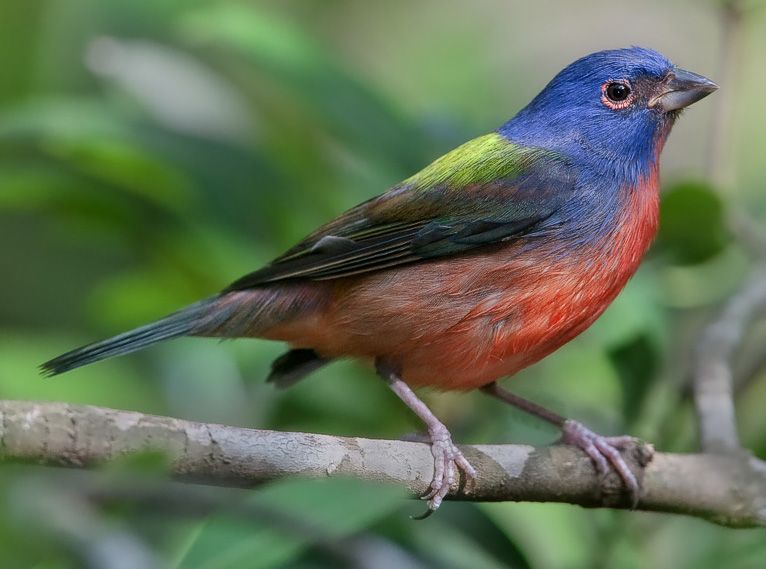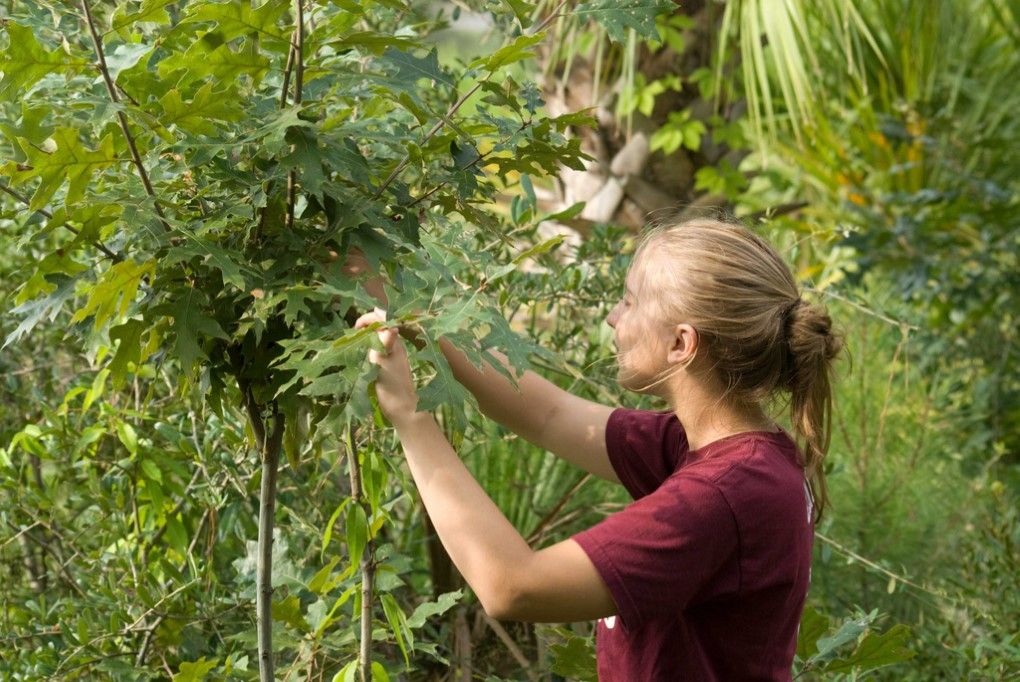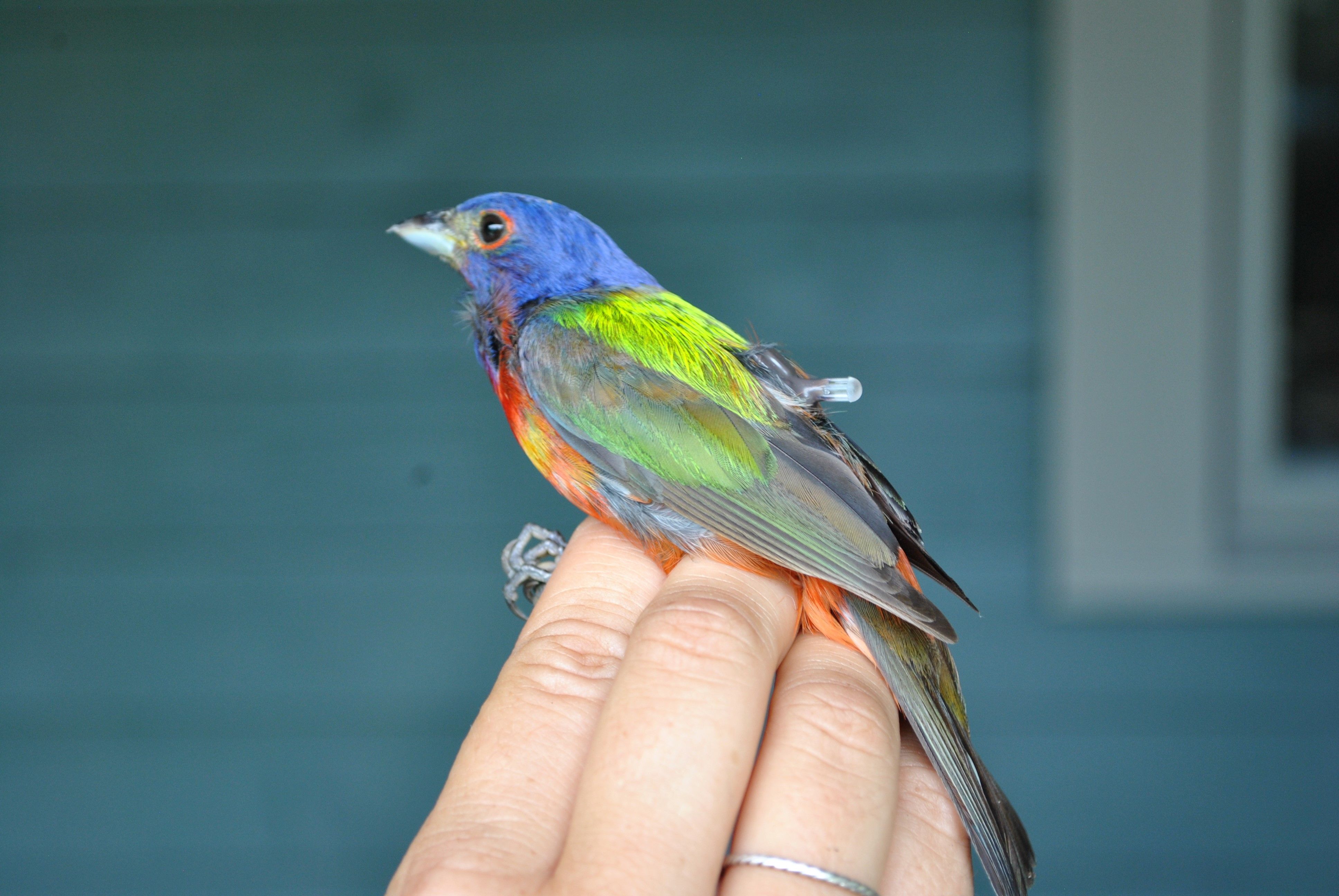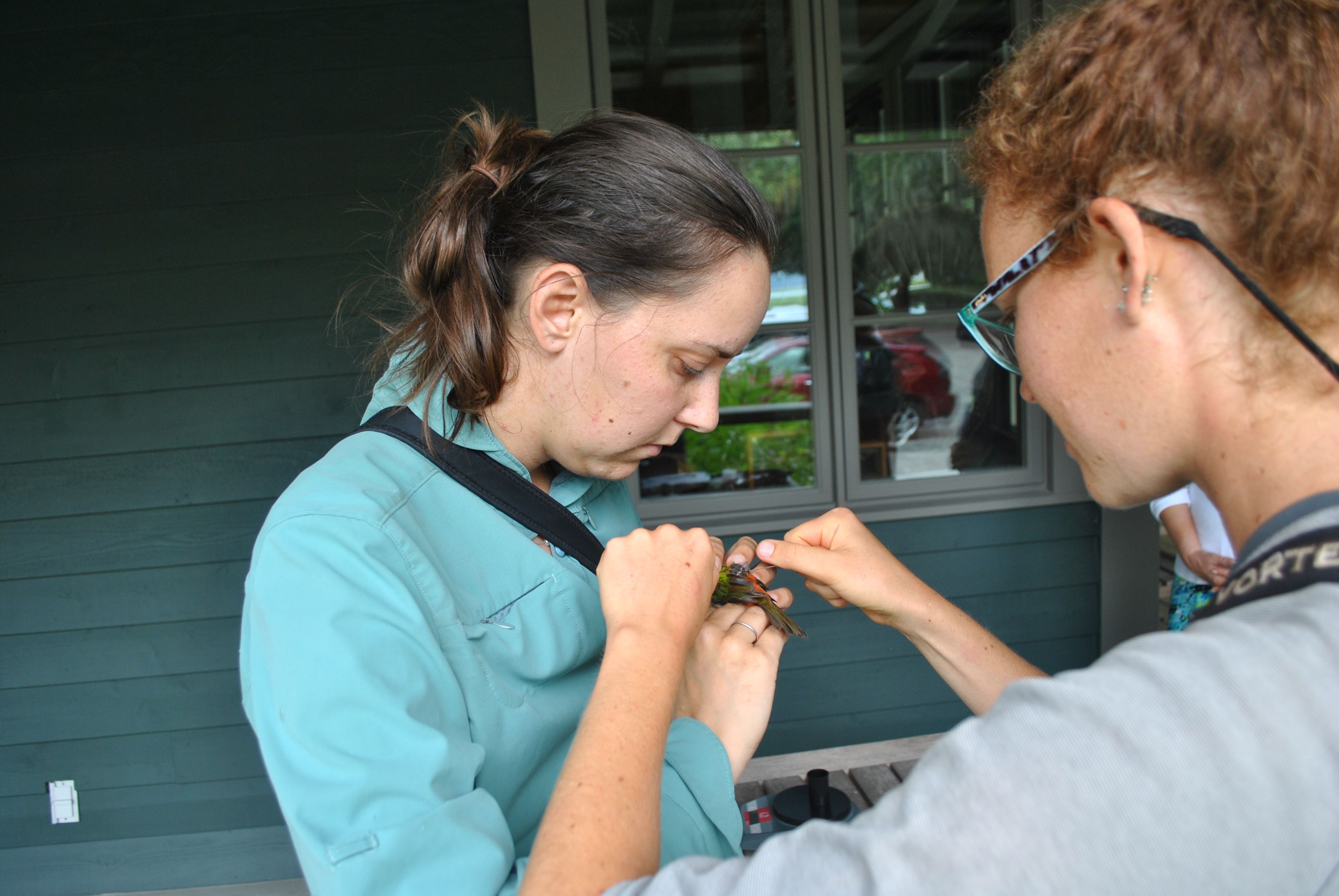Research and Conservation
Painted Buntings
The Painted Bunting (Passerina ciris) belongs to the Passerina genus of birds in the Cardinal family Cardinalidae. The painted bunting is found in thickets, woodland edges and brushy areas, along roadsides, in suburban areas, and gardens. The male was once a popular caged bird, but now its capture is illegal. Populations are declining on the East Coast where habitat is being lost to development. The breeding range includes Texas, Oklahoma, Arkansas, Florida, Georgia, South Carolina and Louisiana.
Painted buntings are one of the most beautiful birds in North America and appear to be in decline as their coastal habitats are being lost. Because of their beauty, these migratory birds also are captured for the pet trade.
As a neotropical migrant which spends half the year in another part of the world, conservation of painted buntings requires international partnerships and protection of their habitat in two vastly different regions. The Lowcountry is at the heart of the painted bunting nesting range and can play a critical role in advancing conservation of the species. The LowCountry Institute has supported several studies on this charismatic species:
-
Jay Garcia completed a master’s project (Clemson, 2004) on the nesting behaviors of painted buntings on Spring Island and the Webb Wildlife Center, a refuge owned by the South Carolina Department of Natural Resources.
-
Clemson graduate student Jessica Gorzo worked on ways to help golf courses manage for painted buntings. She correlated bird community with habitat type to determine which habitats support the highest diversity of birds. Results indicated that courses that maintain marsh buffer vegetation have higher breeding bird diversity, including greater numbers of the painted bunting. Read Avian Communities and Landscape Characteristics of Golf Courses Within the Beaufort County Sea Island Complex
-
Paul Sykes, an ornithologist with the USGS, also uses Spring Island as a regular study site for a long-term study looking at painted buntings along the east coast. The 20-year study found that eastern painted buntings have a potential for high survival and longevity, as well as high site fidelity, leaving them vulnerable to coastal development.
-
In 2018, a new study led by Dr. Clark Rushing and Dr. Peter Marra of the Smithsonian Institute included Spring Island as a field site. Twenty birds from Spring Island were outfitted with geolocators and 51 birds were banded with unique identifying tags. The project continued through 2021, with researchers revisiting the sites and attempting to recapture the birds. The purpose of the project is to determine the winter distribution and migratory connectivity of southeastern painted buntings. Analysis of 10 nanotags recovered through 2020 revealed that painted buntings breeding on Spring Island primarily winter in southern Florida, although two individuals wintered in Cuba and one wintered in the Bahamas. At this time, most of the data comes from male birds; in the future we hope to look at difference in migration behavior between males and females. This new information is important in developing a comprehensive management plan for painted buntings which includes protection on their wintering and breeding grounds.
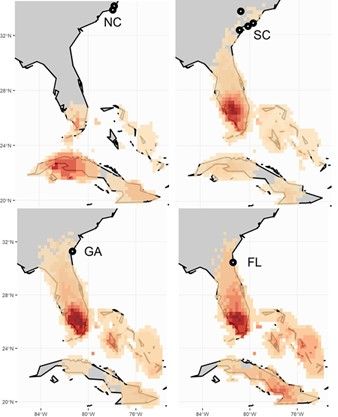
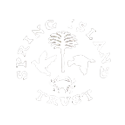
Copyright © Spring Island Trust
40 Mobley Oaks Ln. · Okatie, SC 29909 · 843-987-7008
Site by Sans Sheriff Studio

